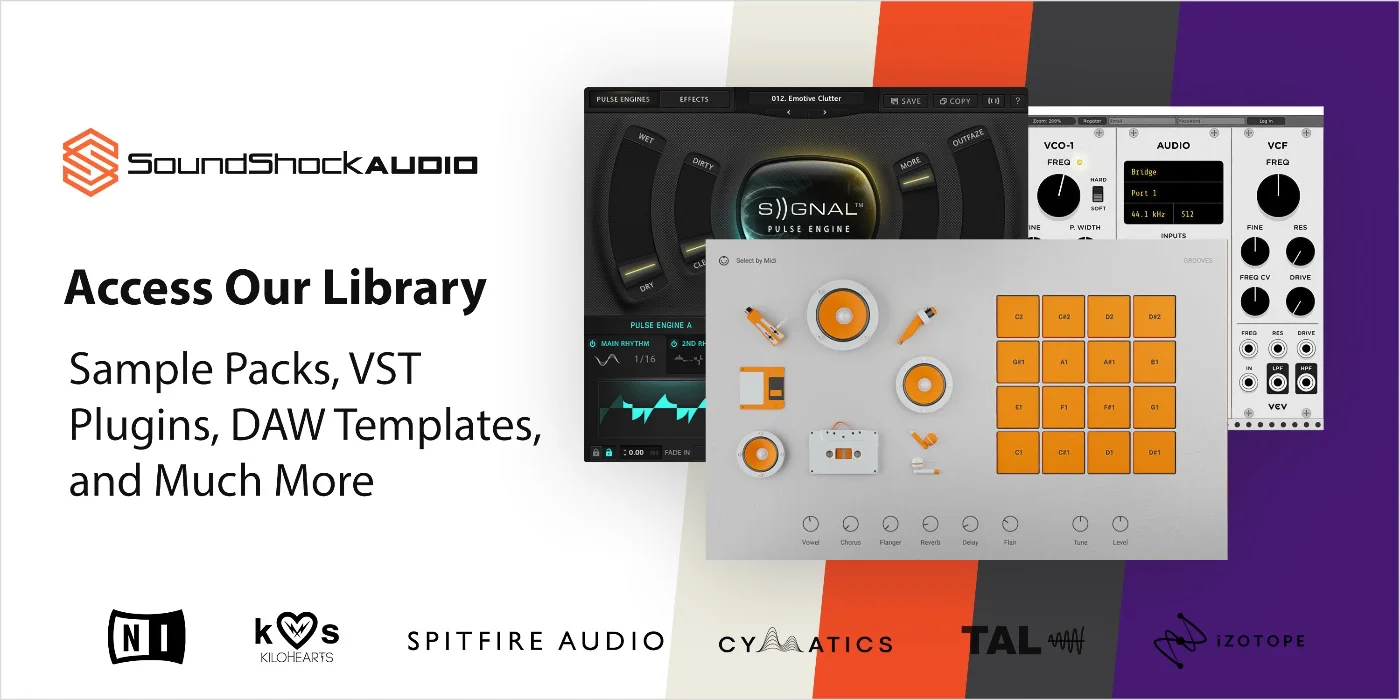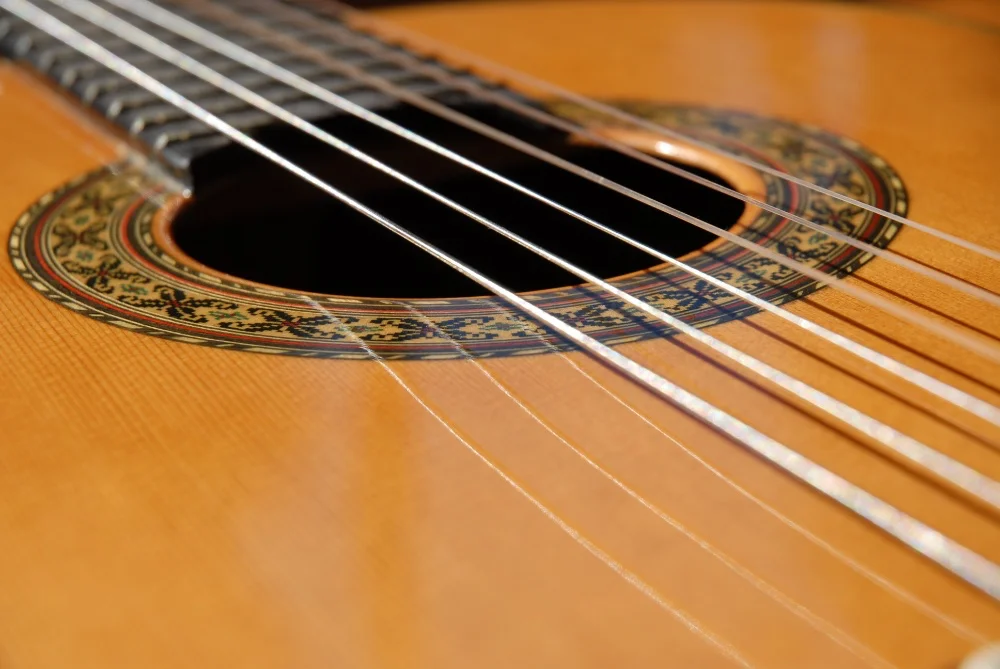Are you looking to get the perfect sound out of your nylon guitar? As an audio engineer and producer with expertise in eq-ing nylon guitars, I’m here to help. In this article, I’ll be taking you through my ultimate guide to EQ-ing a nylon guitar – so you can be sure that each time you play, it sounds absolutely amazing.
The first step is understanding what exactly equalization (EQ) is. EQ allows us to adjust the frequency range of our instrument by boosting or cutting certain frequencies; ultimately allowing us to shape the tone of our music. This makes EQ essential for creating a natural sounding mix.
Next we’ll look at how we can use EQ to enhance the sound your nylon guitar produces. We’ll discuss everything from finding ‘sweet spots’ in high and low ranges as well as dealing with pesky feedback issues. By following along with my steps, you’ll have all the knowledge necessary to make sure your next performance has crystal clear tones every single time!
Understanding Acoustic Guitar Tone
When it comes to acoustic guitar tone, understanding the nuances of what makes a great sound is key. Every guitar has its own unique acoustic sound that can be shaped and manipulated with EQ settings. Nylon guitars have their own distinct characteristics when it comes to tonal qualities; they produce a warm, lush sound which can be further enhanced by eq-ing. By understanding the fundamentals of how each element contributes to an overall guitar sound, one can better understand how to shape and craft ideal tones for any nylon stringed instrument. With this knowledge in hand, we can move on to discussing the benefits of eq-ing a nylon guitar.
Benefits Of Eq-Ing A Nylon Guitar
EQ-ing a nylon guitar comes with many benefits, especially when done correctly. With the right equipment and setup, you can improve sound quality to get the perfect balance of tone and volume. Here are some of the main advantages:
Increased Control Over Sound Quality:
EQ provides control over every aspect of your nylon guitar’s sound. You can manipulate frequencies, boost or reduce levels, add effects like reverb or chorus, as well as shape tones for different playing styles. It also allows you to make adjustments on the fly without having to change instruments or settings.
This level of audio control gives you more flexibility in creating sounds that suit your style and preferences. Whether it’s jazz, rock, folk, classical – whatever genre you’re playing – EQ will help you achieve an unforgettable performance each time.
Improved Tonal Balance:
By adjusting specific frequencies within a signal path using EQ controls, you can give clarity to certain notes while removing unwanted noise from others. This helps create a balanced tonal mix which results in significantly better recorded performances and live sound reinforcement systems.
Furthermore, controlling treble/bass balance enables players to adjust their instrument’s overall timbre for any size venue or recording session – allowing them to tailor their sound whether they’re performing solo or with a band!
With these types of added benefits available through proper use of eq on your nylon guitar, it’s easy to see why so many musicians take advantage of this powerful tool for crafting great sounding music. Now let’s look at what kind of necessary equipment is required for effective eq-ing…
Necessary Equipment And Setup
Equipping yourself with the right tools and setting them up correctly is a crucial step in achieving an optimal sound when EQ-ing a nylon guitar. Figuratively speaking, it’s like having all the ingredients for a delicious dish, but without putting together a well thought out recipe you won’t get to taste its full potential.
The following table outlines some of the essential items needed to EQ your nylon guitar:
| Item | Description |
|---|---|
| Acoustic Guitar Amp | Used to amplify the sound from your acoustic guitar so that you can hear it clearly on speakers or headphones. |
| Audio Interface | Connects between your acoustic guitar amp and recording equipment (computer/laptop) for audio processing purposes. |
| Guitar Cable | Necessary for connecting your acoustic guitar to any type of amplifier system. |
| Equalizer Pedal | Allows you to control the frequency response curve by adjusting different bands of frequencies individually. |
| Acoustic Pickup | Gives you better control over volume and frequency balance while playing through amps or PA systems. |
Having said this, no matter how high quality these pieces of gear are, if they aren’t properly set up then the end result won’t be as desired. We will delve further into recommended frequency ranges for eq-ing next section, however before getting there we must ensure that everything is connected correctly and working optimally!
Recommended Frequency Ranges For Eq-Ing
EQ-ing a nylon guitar is all about understanding the fundamentals of acoustic guitar tone. It’s important to know which frequency ranges best serve your sound, so you can create professional results every time. Here are some recommended frequency ranges when EQ-ing:
- Highs (3kHz – 20kHz): Boost or cut these frequencies to add clarity and airiness to your sound.
- Mids (200Hz – 3kHz): Control mids for power and punch in the mix.
- Low Mid/Upper Bass (50Hz – 200Hz): Add warmth and body to the overall tone.
- Low End (20Hz – 50Hz): Cut this range for better definition without muddiness.
Once you understand these fundamental frequency ranges, troubleshooting tips become easier. You’ll be able get the perfect tone from your nylon guitar with ease!
Eq Settings For Different Music Genres
When it comes to EQ settings for different music genres, there are some general guidelines that apply. For flamenco guitar playing, you want to boost the mid-range and high frequencies slightly, while reducing the low end. This will bring out the attack of the strings and give a crispy sound. For classical guitar playing, you’ll want to reduce the midrange lightly in order to avoid any muddiness caused by plucking multiple strings at once. When it comes to jazz guitar playing, boosting both the treble and bass frequencies is recommended as this accentuates harmonic overtones created by chord progressions. For blues guitar playing, roll off the higher frequencies slightly so that your tone doesn’t become too bright or piercing. And finally for fingerstyle guitar playing, try cutting around 400hz to get rid of any boxy sounds that often come from strumming chords on an acoustic nylon stringed instrument. To sum up, each genre has its own unique sonic characteristics that require different equalization techniques in order to achieve optimal results.
Now let’s move on troubleshooting tips and techniques for eq-ing a nylon guitar…
Troubleshooting Tips And Techniques
Troubleshooting the sound of a nylon guitar can be tricky. It’s important to understand the basics of EQ techniques and how they affect your acoustic guitar tone. This section will discuss tips for troubleshooting common issues related to eq-ing a nylon guitar, as well as provide some key advice on achieving professional results with your sound.
| Troubleshooting Tips | EQ Techniques |
|---|---|
| Check amp settings | Use high pass filter |
| Adjust gain | Monitor frequency sweeps |
| Play around with mics | Cut or boost frequencies in small increments |
| Experiment with room ambience | Be aware of sonic masking effects |
After testing out various combinations of these troubleshooting tips and eq techniques, you should have an idea of what works best for your particular setup. Make sure to take notes along the way so that you can reference them later if needed. When dialing in an ideal sound, it’s important to make adjustments gradually over time until you get exactly what you want. With patience and practice, you’ll eventually find yourself consistently achieving excellent tones from your nylon guitar recordings.
By utilizing both basic troubleshooting principles and advanced eq techniques, you’ll create a great sounding recording every time!
Tips To Achieve Professional Results
Eq-ing a nylon guitar is like sculpting an emotional soundscape: it’s all about finding the perfect balance. With that said, here are some tips to help you achieve professional results when eq-ing your instrument:
- Focus on frequency ranges. Be sure to focus on certain frequencies associated with different instruments and styles of music. This will allow you to fine tune the tone of your nylon guitar for whatever genre or style you want to go for.
- Take advantage of troubleshooting tools. There are plenty of online guides and tutorials available that can give you helpful advice and tips when it comes to eq-ing technique. Make use of these resources as they can be invaluable in achieving the best possible result.
- Use a multi band compressor/limiter. A multi band compressor/limiter is great for controlling dynamics, allowing you to shape the overall sound more accurately without overdoing it or making things sound too loud or harsh.
- Experiment with EQ settings. Don’t be afraid to experiment with different EQ settings until you find what works for your particular setup and playing style – there isn’t one single approach that works for everyone!
- Pay attention to details. When working with any type of audio equipment, especially something as delicate as a nylon guitar, pay close attention to even the smallest details such as resonance, sustain, attack and decay times etc., which can all have a significant impact on the final outcome.
It takes dedication and practice, but if done correctly eq-ing a nylon guitar can bring out its full potential and make it shine brighter than ever before! So take your time, don’t rush through it, and enjoy every step along this creative journey!
Frequently Asked Questions
What Is The Best Type Of Eq To Use For A Nylon Guitar?
When it comes to eq-ing a nylon guitar, the best type of eq to use will depend on the desired sound. Many engineers and producers suggest using semi-parametric or parametric equalizers for optimal control over the tone. While there are many types of eqs available, these offer more flexibility when shaping the soundscape.
The choice of equipment for a nylon guitar can have a big influence on its final sound. Using an appropriate EQ settings is essential in order to fully capture the nuances and resonances that come from playing this instrument. Here are some important considerations:
- Adjust frequency bands with precision – Semi-parametric or parametric equalizers allow you to dial in specific frequencies, making it easier to isolate problem areas and boost desirable frequencies.
- Experiment with different curves – Different shapes (bells, shelves etc) can be used to create unique tonal effects while still maintaining clarity across all registers.
- Utilize eq effects – Depending on your goals, certain eq effects such as chorus or reverb may help add depth and texture to a particular part of your mix.
Ultimately choosing an effective eq setting is largely based on personal preference and experimentation – try out different combinations until you find what works best for your project! With careful consideration given to both equipment choice and actual configuration, any engineer or producer should be able to craft a perfect sounding mix with their nylon guitar recordings.
What Are Some Techniques For Achieving A Warm And Smooth Guitar Sound?
Picture a warm, smooth guitar sound resonating through the air. It’s a beautiful thing – and one that can be achieved if you know the right techniques for eq-ing your nylon guitar. As an audio engineer who specializes in eq-ing nylon guitars, I’d like to share with you some of my top tips on how to get a warm and smooth tone out of your instrument.
First, it’s important to understand what type of EQ works best for achieving those sounds. Generally speaking, treble frequencies should be rolled off slightly while mid-range frequencies are kept flat or boosted very subtly. There are also certain parametric frequencies which can really add warmth when dialed up ever so slightly – usually around 200 Hz – but do take care not to boost too much as this may muddy up the overall sound.
Next, experiment with reverb settings to achieve a more natural sounding effect. By adding just enough reverb you’ll create depth without making things overly wet or bright; this will help bring out the clarity and richness of each note. Also, remember that compression is key for getting consistent levels from string to string and fretting hand to picking hand — again applying subtlety here goes a long way towards bringing out both warmth and smoothness in your playing style.
So there you have it: these simple yet effective techniques will ensure that you get the most out of your nylon guitar’s potential for creating a warm and smooth sound every time!
How Can I Avoid Feedback When Eq-Ing A Nylon Guitar?
When eq-ing a nylon guitar, one of the most important elements to consider is preventing unwanted feedback. This can be achieved by tweaking certain settings on your EQ to get the best possible sound without having any issues with feedback. Here are some tips for avoiding feedback when eq-ing a nylon guitar:
- Pay attention to frequency ranges – High frequencies tend to cause more problems than low ones, so it’s important to avoid boosting these too much in order to prevent excessive feedback.
- Use parametric or semi-parametric EQs – These kinds of equalizers allow you to isolate specific frequencies and make adjustments accordingly, which can help you achieve a warm and smooth tone while still keeping feedback at bay.
- Experiment with different mic placements – Moving the microphone around slightly can have a big effect on how much feedback you get from your amp, so take some time to try out different positions until you find what works best for your setup.
By following these steps, you’ll be able to craft a unique sounding guitar sound that won’t suffer from unwanted noise interference due to an incorrect eq setting. When adjusting the levels of each frequency band, use caution and listen carefully for any signs of distortion or buzzing sounds that could indicate potential feedback issues before moving onto further adjustments. By taking extra care during this process, you should be well equipped with all the necessary tools needed for perfectly eq-ing your nylon guitar every time!
What Is The Difference Between Eq-Ing A Steel String Guitar And A Nylon Guitar?
If you’re an experienced audio engineer or producer, eq-ing a steel string guitar may seem like second nature. But when it comes to eq-ing for a nylon string guitar, the differences can be quite significant and require special consideration. To help guide your process, let’s take a look at what makes the difference between eq-ing a steel string guitar versus one with nylon strings:
- The type of pickups used on each instrument will affect the sound that is being produced;
- Nylon strings are typically much softer than their steel counterparts so they don’t drive amps as hard;
- Steel strings tend to have more highs in their frequency range where nylon strings generally provide richer mids and lows;
- EQ settings need to be adjusted based on whether you want to emphasize certain characteristics of the guitars tone such as brightness or warmth.
It’s important to recognize these distinctions when trying to achieve the perfect sound from your nylon string guitar. Many engineers make the mistake of using too many high frequencies during eq-ing which results in harshness and feedback issues due to the softness of nylon strings. On the other hand, not enough high end frequencies can result in muddy sounding tones that lack clarity and definition. It is therefore necessary to find a balance by understanding which areas should be boosted or cut depending upon what kind of sound you are looking for from your instrument. Additionally, changes made on one type of guitar might not necessarily translate well onto another so it’s important to experiment before settling into an ideal setting for both types of guitars. With proper practice and experimentation, any audio engineer or producer can masterfully craft unique sounds from either a steel or nylon stringed guitar through effective use of equalization techniques!
How Can I Adjust The Eq To Achieve A Brighter Sound?
When it comes to adjusting the EQ to achieve a brighter sound on a nylon guitar, there are several steps you can take. One of the most important is to boost the treble frequencies in order to brighten the tone. You should also consider cutting some of the lower end for clarity and focus. This will help create an overall brighter guitar sound that stands out in your mix.
To make these adjustments, start by boosting the treble range between 3kHz-7kHz with a moderate amount of gain, then reduce any unnecessary low or mid-range mud from 250Hz down. By doing this, you’ll be able to get a much clearer and more transparent upper register response from your nylon strings. Additionally, adding a slight scoop around 400Hz can really bring out the higher harmonics while still maintaining presence in your signal chain.
The key here is finding balance—you don’t want too much boost as it could cause harshness in certain areas. When setting up EQs for nylon guitars, aim for subtlety rather than drastic changes so that the natural characteristics of the instrument shine through without being overdriven or distorted. With careful adjustment and patience, you’ll be able to transform your standard nylon guitar into something truly unique and special!
Conclusion
As an audio engineer/producer with expertise in EQ-ing nylon guitars, I’m here to tell you that getting the perfect sound every time is achievable! With a few simple techniques and some knowledge on what type of EQ to use, you can get your guitar sounding warm and smooth. You’ll also be able to avoid any unwanted feedback and adjust the EQ for either a brighter or darker tone.
The key takeaway from this ultimate guide? Don’t be afraid to experiment – it’s all part of the journey towards finding the right sound. And while there are differences between steel strings and nylon guitars when it comes to eq-ing, don’t let that stop you from trying out different combinations until you’re satisfied with the result. Have fun, trust your ears, and who knows – maybe one day you’ll create something magical!
So if you want to achieve the perfect sound for your nylon guitar every single time, all it takes is a bit of patience and practice. Trust me – once you find the ideal combination of settings, those hours spent tweaking knobs will have been worth it!
Looking for the best free music production tools available?

SoundShockAudio has got you covered. Save time Googling for free tools and subscribe today and access our vast library of over 4,000 tools to create professional-sounding music.
Need more help when it comes to EQing? Check out the article, how to eq tenor sax.
Also check out this other article how to eq kick and 808, for more EQing tips.




